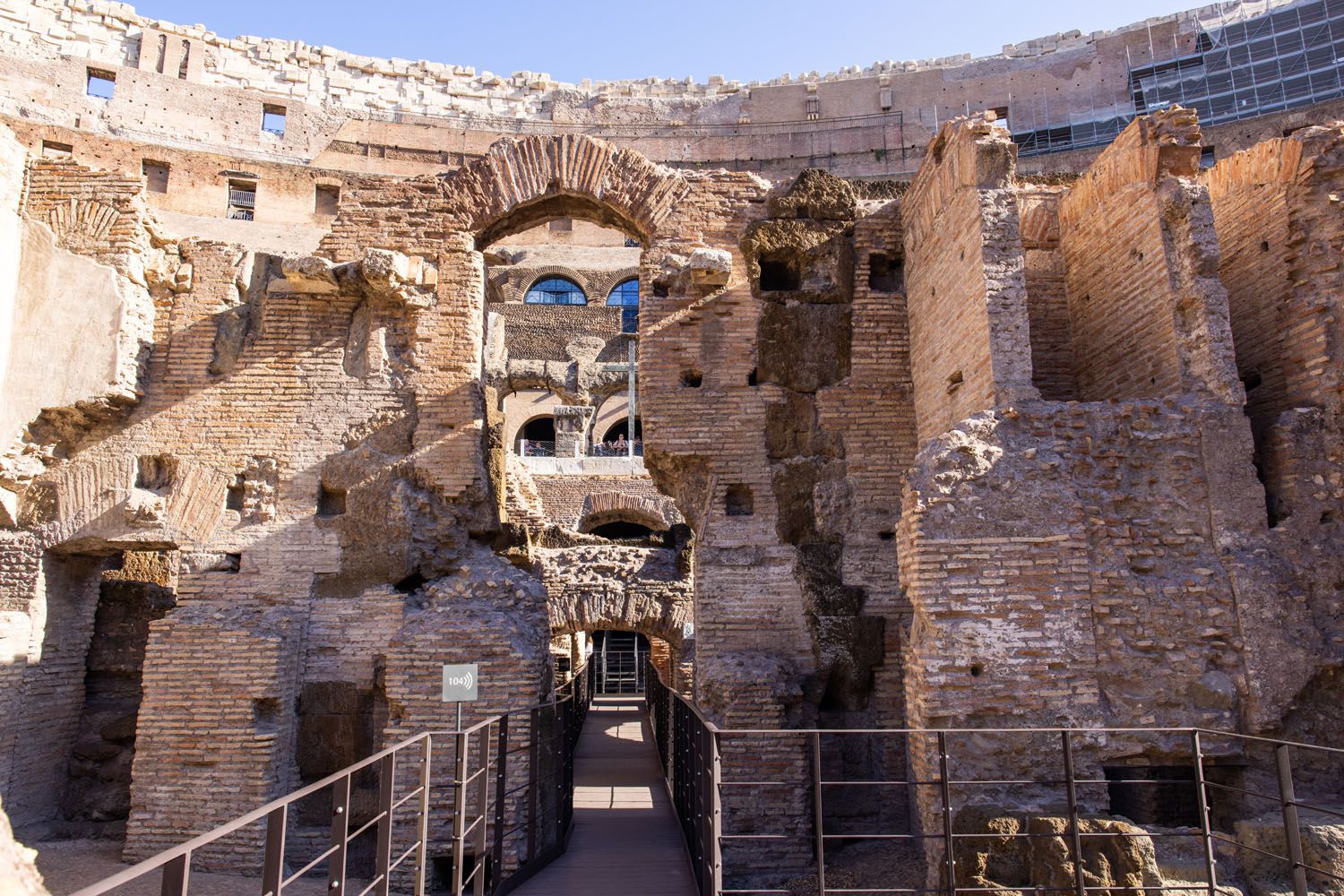“Embark on a Journey to Ancient Rome: Colosseum Underground Tour”
Immerse yourself in the heart of ancient Rome through the Colosseum Underground Tour! Delve into labyrinthine chambers, unveiling hidden secrets below modern streets. With covered Colosseum underground tickets, explore history’s depths, feeling the grandeur of past spectacles where gladiators clashed. Led by expert guides, bridge eras, and trace emperors’ and gladiators’ steps. Unearth enigmatic Colosseum underground, a captivating once-in-a-lifetime experience. Secure your place on the Best Skip-the-Line Colosseum Underground Tour for an adventure that echoes through time.
What Does the Colosseum Underground Tour Entail?
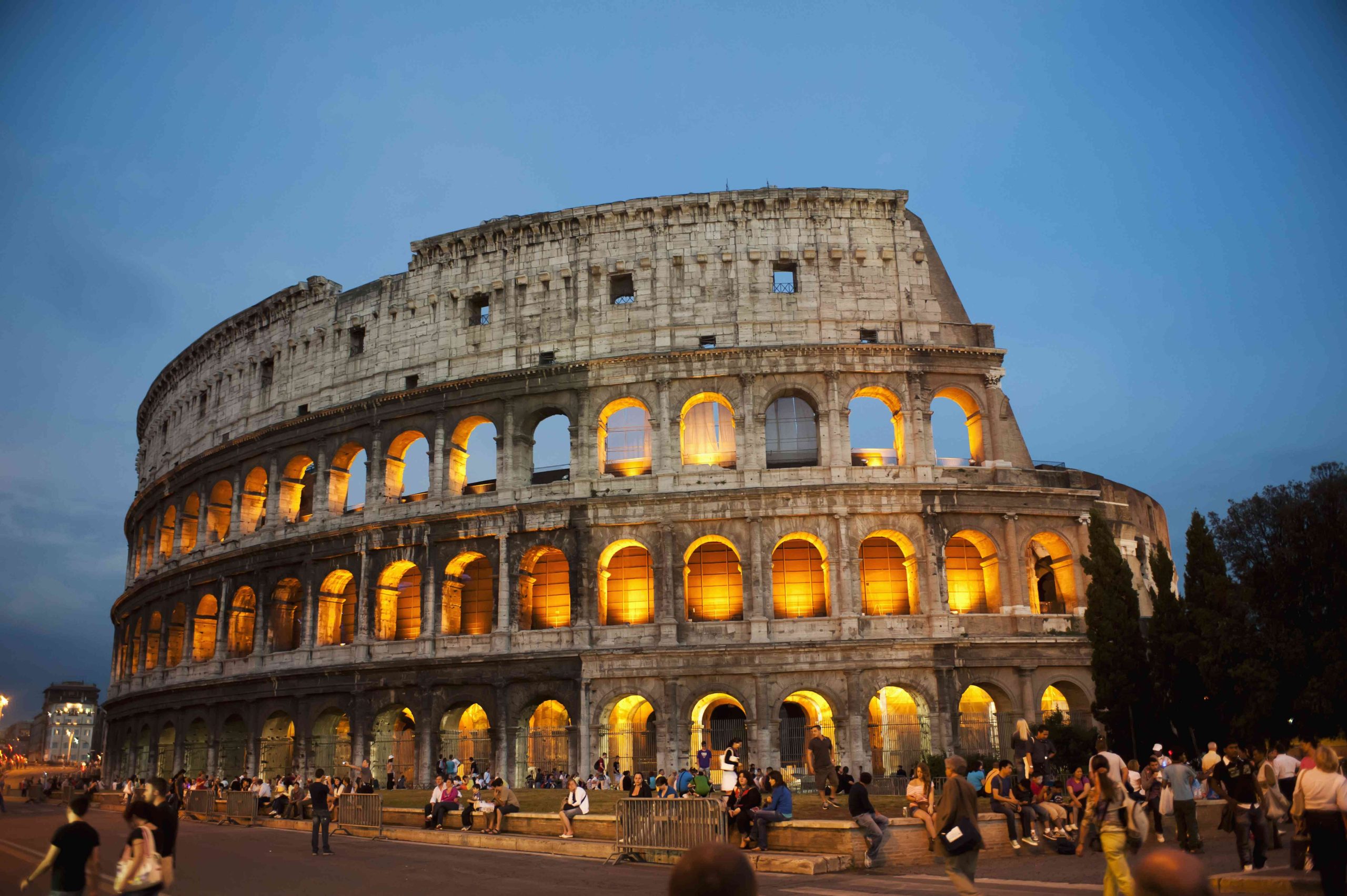 Experience the allure of a Colosseum Underground Tour—a captivating expedition to Rome’s iconic Colosseum. Venture into its concealed chambers and subterranean realms, delving into the enigmatic depths of this ancient wonder. Unveil the grandeur and mysteries of antiquity firsthand.
Experience the allure of a Colosseum Underground Tour—a captivating expedition to Rome’s iconic Colosseum. Venture into its concealed chambers and subterranean realms, delving into the enigmatic depths of this ancient wonder. Unveil the grandeur and mysteries of antiquity firsthand.
Embark on a whimsical journey through time with the premier Skip-the-Line Colosseum Underground Tour, akin to stepping into a time machine.
As you delve into the hidden recesses, underground chambers resound with echoes of an era long past.
Uncover an intricate network of tunnels, passageways, and chambers that once teemed with activity.
Marvel at the ingenious engineering underpinning these underground labyrinths. Immerse in tales of audacious escapes and clandestine gatherings within these revered walls.
Commissioned in 72 A.D. by Emperor Vespasian, the Colosseum stands as a testament to Roman architectural prowess, a symbol of the empire’s zenith. Known as the Flavian Amphitheater, it graces the list of Seven Wonders of the World and ranks as Rome’s second-most visited attraction.
Welcoming over 6 million tourists annually, this iconic edifice occupies a central place in Rome’s identity, a bastion of historical significance. Its resilience in the face of adversity echoes through time, inviting exploration into its captivating narratives.
To traverse this celebrated site, an understanding of the best approach is essential. The ultimate access lies in the Skip-the-Line entrance—a gateway to profound exploration. Ideal for enthusiasts of Roman history, this pass provides backstage access, unveiling the theater’s inner workings. This guide comprehensively addresses inquiries about the Skip-the-Line Colosseum Underground Tour, ensuring an illuminating adventure.
Unveiling Ancient Rome: Subterranean Chambers and Arena in Colosseum Tour
Immerse in Ancient Rome: Colosseum Underground Chambers and Arena Tour
Embark on an immersive journey through Rome’s iconic Colosseum with the Ancient Rome and Colosseum Tour Underground Chambers and Arena. This comprehensive exploration intertwines the intrigue of underground chambers and the grandeur of the arena, allowing you to plumb the depths of this ancient marvel.
Skip-the-line access and dedicated underground and third-level tickets whisk you past the crowds. Guided by experts, this subterranean Colosseum tour grants profound insights into its historical and cultural significance.
Spanning five acres in the heart of antiquity, the Colosseum is the largest amphitheater. With an astounding capacity for 87,000 spectators, it has witnessed the spectrum of Roman history’s glory and shadows.
Once a locus of blood-soaked Roman entertainment, its layers of history now beckon visitors. From the Gladiator’s Gate, traverse to the Arena floor, where the elliptical stage reverberates with the echoes of legendary gladiator contests.

Beneath the Colosseum’s floors, the subterranean chambers served as holding areas for slaves, animals, and gladiators. This underground tour unveils fascinating insights into this historical site.
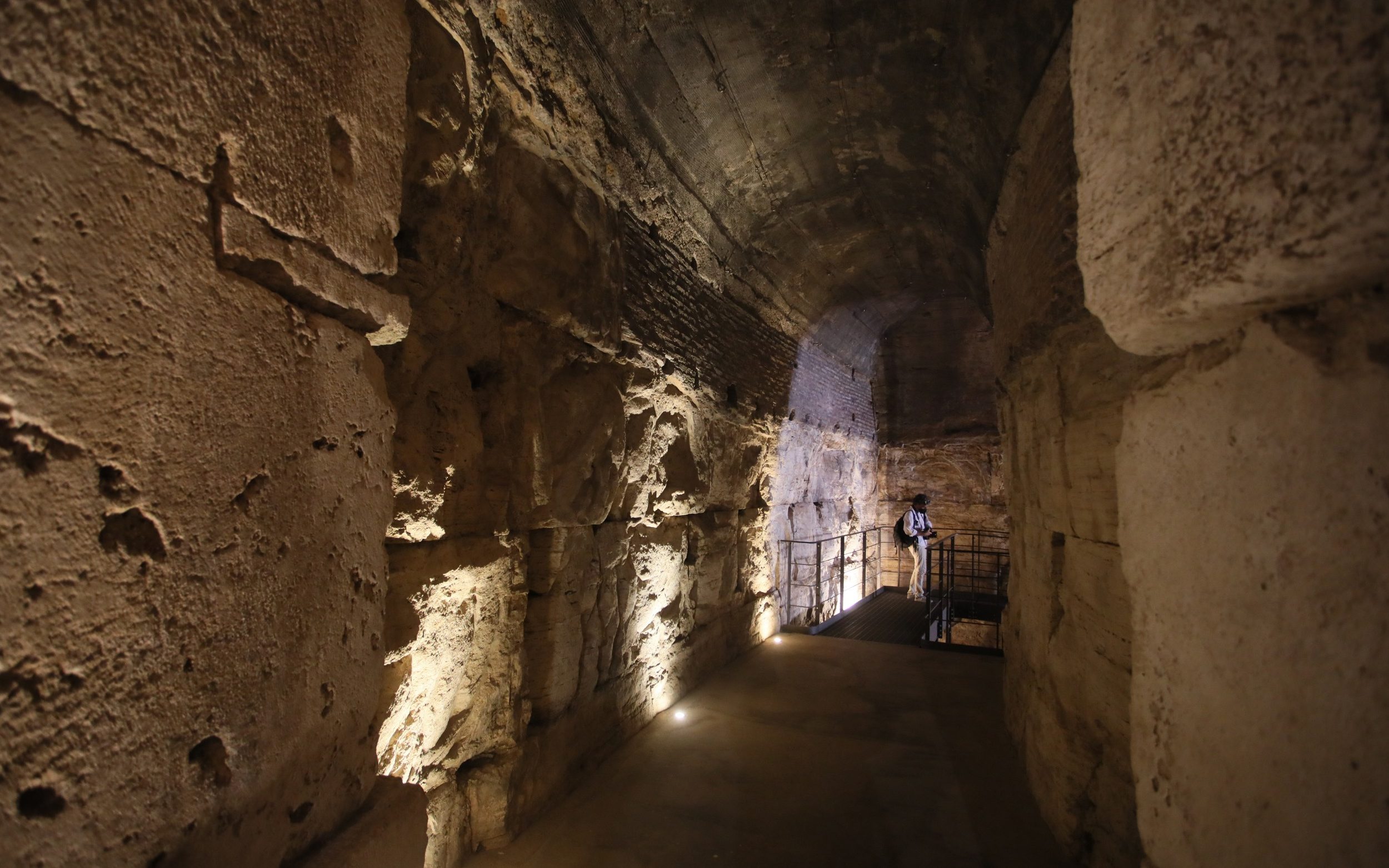
Beneath the Colosseum’s expanse, an intricate network of underground tunnels seamlessly converges with the Hypogeum, adjacent to the Roman gladiators’ barracks. Ingenious Roman engineers orchestrated these passages to veil gladiators on the Arena floor. Elevated 30 feet, caged wild beasts would surge forth, infusing the arena with abrupt brutality via trap doors designed for both animals and slaves.
Not confined to a solitary savagery, the arena witnessed diverse forms of combat. In the Naval phase, it transformed into a watery battleground, mirroring maritime clashes.
In its nascent era, the Colosseum unveiled remarkable innovation on its fourth-tier Arena. Retractable canvas roofing, adroitly maneuvered, provided sanctuary from the sun’s blaze during games.
Amidst these hallowed edifices, history’s pages unfurl, offering a glimpse into eras past. Navigate through Colosseum’s chronicles in the ensuing segment, traversing cobblestone-laden lanes of antiquity, a nostalgic voyage from history class to reality.
It’s time to unveil the secrets of the Rome Colosseum Underground Tour

Unearth the Rome Colosseum Skip-the-Line Underground Tour, a voyage into history’s core. Brace for a sensory awakening as the allure unfurls before you.
Approaching this architectural marvel, you bear witness to centuries’ weight pressing upon your shoulders. Time whispers tales of valor and splendor, anticipation electrifying the air with each step.
The Rome Colosseum stands as a testament to human ingenuity and resolute spirit, its secrets echoing through time, granting glimpses into a bygone world.
Guided by an erudite narrator, you venture to the entrance of underground chambers, descending into a labyrinthine passage leading to a forgotten domain.
The Rome Colosseum Underground Tour transcends mere journey; it’s an immersion into an ancient civilization’s very essence.
As you delve into the heart of this colossal titan, your senses heighten. Vast subterranean realms sprawl beneath the Colosseum, ready to be unveiled—an enthralling underground realm, enveloping you in epochs long past.
The Rome Colosseum, standing for more than 1,900 years
This ancient wonder, an embodiment of Rome’s magnificence, boasts a history spanning over 1,900 years. Initiated in 72 A.D., its completion demanded nearly 8 years.
The awe of witnessing architecture, walls, and arches, each surpassing a millennium, holds an ineffable charm. Here’s a captivating tidbit: this amphitheater predates the Great Wall of China by over 500 years.
The initial designation: Flavian Amphitheater
In the epoch of the Flavian Empire, the Colosseum emerged into existence, drawing its nomenclature from this era. In the Latin tongue, it bore the name Amphitheatrum Flavium.
Initiated under the reign of Emperor Vespasian, the construction of the Colosseum commenced. It was his vision that set the foundation for this monumental endeavor. Upon its completion, the amphitheater was unveiled to the public by his son, Titus, in the year 80 CE. This inaugural event marked the culmination of almost a decade of tireless labor, a testament to the Flavian dynasty’s dedication to the creation of this architectural marvel.
The most colossal Amphitheater
Crafted from a blend of concrete and stone, this monumental amphitheater stands as the most expansive structure in the realm of ancient Rome.
Encompassing dimensions twice that of a modern football field, this arena is renowned not solely for its storied gladiatorial heritage, but also for holding the distinction of being the globe’s most colossal amphitheater. Constructed atop soft sediment, its foundation proved vulnerable during seismic upheavals, resulting in amplified tremors and heightened devastation. An illustrative instance occurred during the earthquake of 1349, causing a cleavage in its facade, bearing witness to the forces of nature and the enduring legacy of this grand edifice.

Unveiling Engineering Wonders: Deciphering the Mechanics
Ingenious Mechanisms: Unveiling Technological Advancements
Within the Colosseum, an array of mechanical innovations flourished, encompassing elevators, lifts, and more. These intricate systems orchestrated the movement of animals, fighters, and props to the arena. Your tour will grant a glimpse into the relics and workings of these groundbreaking ancient technologies.
Unearthing Secrets: Trapdoors and Pulleys
Delve into the concealed workings of trapdoors and pulleys adorning the Colosseum. These mechanisms played a pivotal role in orchestrating dramatic entrances that captivated the audience. Facilitating the seamless entry of sizeable props and animals onto the stage, they unveil a chapter of engineering marvels from that era.
The Subterranean Enigma: Unveiling Colosseum’s Hidden Tunnels
Imagine the grandeur of the Hypogeum, where mighty creatures once awaited their turn to partake in gladiatorial combat above. Envision the subterranean chambers resounding with the roars of lions and tigers. Delve into the logistical marvel of orchestrating such fierce contestants.
Today, a vivid depiction of the Hypogeum unfolds.
Pre-Hypogeum, the arena would often be submerged to simulate naval warfare. Following its addition, gladiators and beasts found residence within the two-tiered underground expanse.
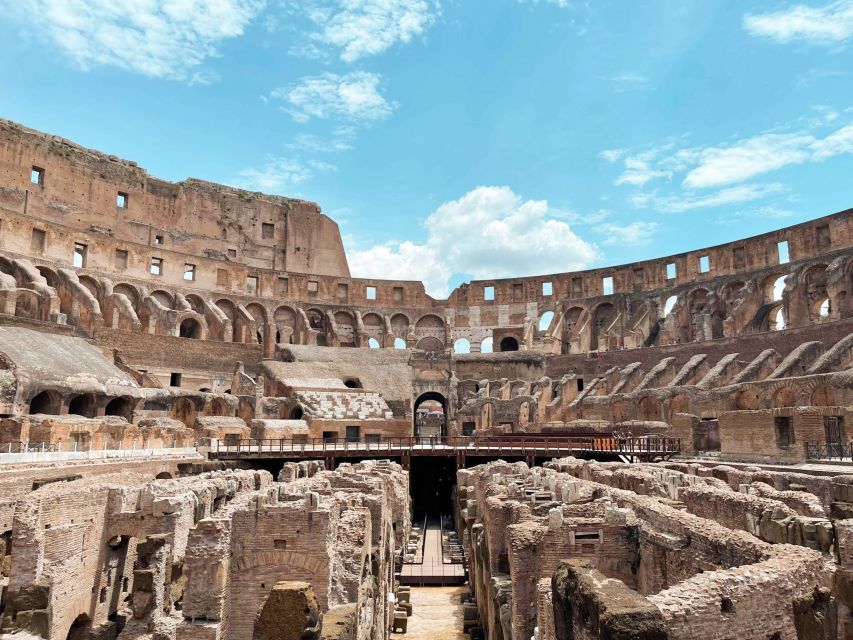
Unveiling Hidden Passageways Below the Arena:
Step into the captivating domain of the hypogeum, a feature of the Colosseum boasting a wooden floor covered in sand. A sprawling labyrinth of subterranean tunnels resides beneath the arena, once serving as the dwelling place for formidable beasts.
Through these passageways, gladiators and animals would dramatically emerge onto the Arena floor, an unexpected spectacle for the crowd.
This feat was made possible by a meticulously designed rope pulley system, concealing the mechanisms orchestrating these spectacles. Embark on an exploration of these clandestine corridors, gaining insight into the intricacies that breathed life into the games.
Unveiling the Subterranean Pathways:
As you traverse these underground pathways, you’ll gain a profound comprehension of the logistical complexities that underpinned the games.
Interconnecting the underground chambers, these passages facilitated access to various sectors of the Colosseum. They served as conduits for the secure and efficient movement of animals, gladiators, and props.
The Spectacular Gladiator Exhibitions
The Colosseum Amphitheater: Epicenter of Gladiator Spectacles
The primary purpose of the Colosseum amphitheater revolved around the enthralling combat of gladiators, serving as a contemporary equivalent to modern-day major sports or fighting shows like WWE, albeit characterized by unscripted bloodshed and intense drama.
For Roman audiences, these contests offered riveting entertainment. Contrary to popular belief, most skirmishes concluded when one gladiator was too wounded to continue. Stringent regulations governed these engagements, featuring combatants of similar stature and experience. The Referee intervened when the confrontation escalated to grave injuries.
Often, these battles resulted in a standoff, ending as crowds grew weary of continuous combat. In rare instances, if a combatant managed to captivate the audience, both fighters were permitted to depart with honor.
Notably, not all gladiators were enslaved individuals. While early stages involved criminals and slaves as combatants, the dynamic transformed over time. Many free men, seeking fame and reward, willingly enlisted as gladiators to showcase their prowess. Among them were ex-soldiers, knights, and even senators, intent on demonstrating their warrior lineage.
Training, accommodation, and sustenance for gladiators incurred substantial costs. Consequently, their promoters were averse to their fatalities. Instructors educated them to incapacitate opponents rather than kill them.
Nevertheless, most gladiator exhibitions were brutal, leading to a relatively short lifespan, typically ending in their mid-20s.
The fate of a seriously injured, disarmed adversary rested with the Spectators. Ultimately, the emperor held the authority to decree whether a gladiator would live or perish.
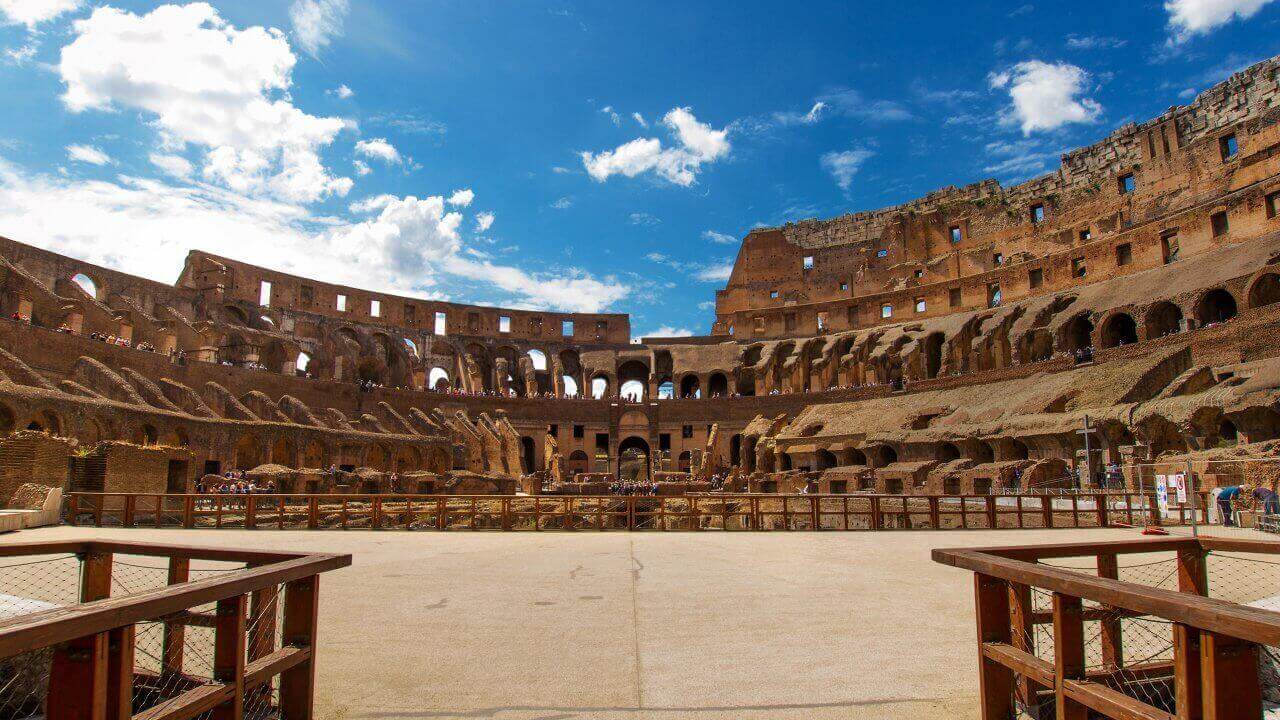
Gladiators Rarely Confronted Beasts
Roman history frequently intertwined with the hunting and confinement of fearsome animals, yet gladiators scarcely participated in these endeavors.
The task of capturing wild creatures fell to venatores and bestiaries. These unfortunate animals met their demise in the inaugural spectacle of the games.
Additionally, they served as instruments of execution, with criminals and Christians often cast into the arena alongside these creatures, becoming part of the entertainment.
Inclusion of Women as Gladiators
Enslaved women occasionally graced the Arena floor, though few embraced the sword willingly. By the first century, women had become a recurring presence in the games. However, patriarchal Roman society often dismissed these female gladiators, and their participation was met with skepticism. The Emperor occasionally reveled in pitting women against each other, but only a select few earned recognition for their combat prowess.
Discover the Notorious Statue of Nero
Nero Claudius Caesar, the fifth Roman Emperor, ascended to power at a mere seventeen years of age. He was the stepson of Emperor Claudius. However, his reputation became tarnished due to his excessive indulgences, lavish lifestyle, and incriminating incidents.
Remarkably, a colossal bronze statue of Nero stands not far from the Colosseum. This statue, sculpted by Zenodorus between 64 and 68 A.D., spans an astonishing eighteen times life-size.
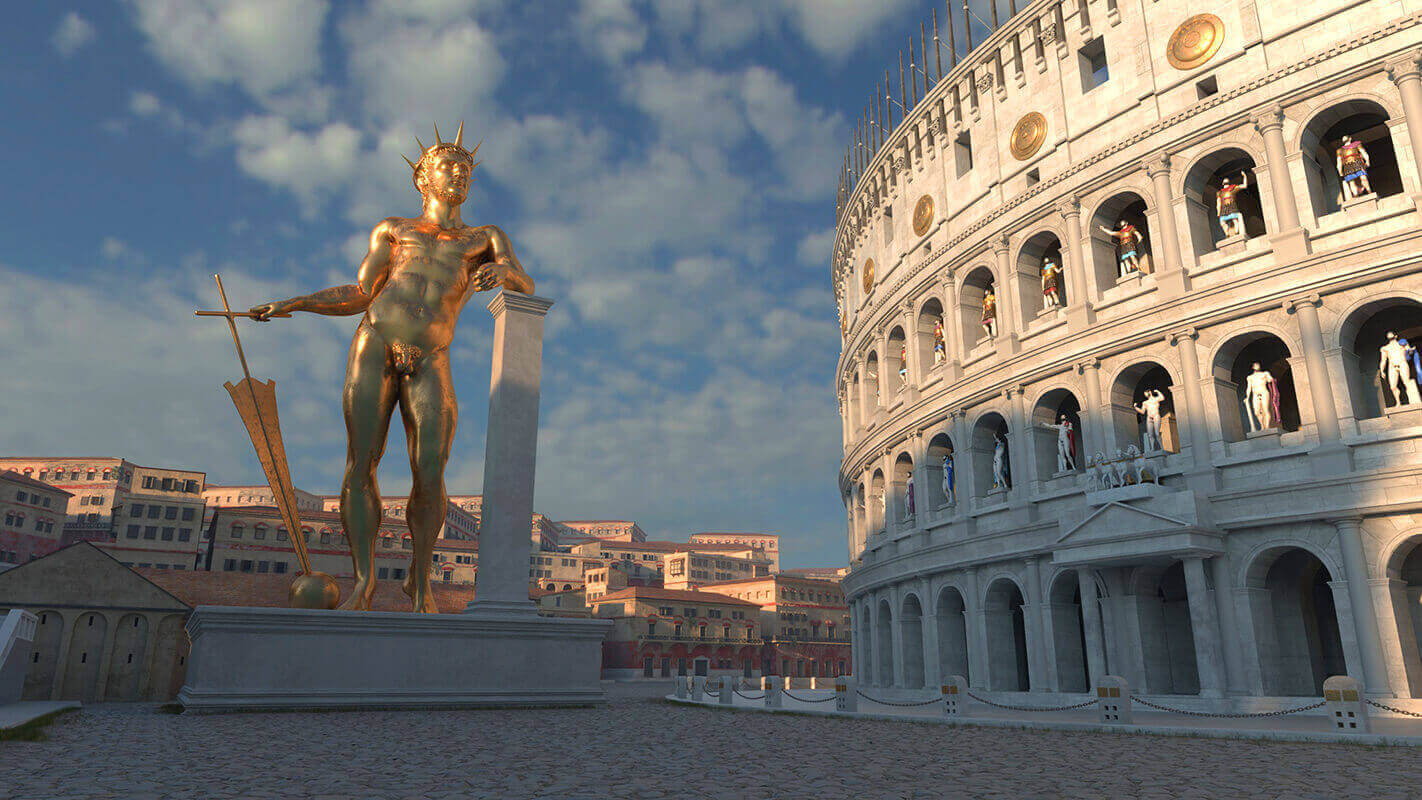
The Golden House – Domus Aurea:
Originally Emperor Nero’s opulent retreat, the Domus Aurea, also known as the Golden House, underwent a transformation after Nero’s demise and a brief civil conflict. Emperor Vespasian reimagined the site, incorporating Nero’s embellishments and integrating the Baths of Trajan. Today, it stands as one of the sites surrounding the Colosseum.
The Dedicated Staff of the Colosseum:
Operating this colossal amphitheater required an extensive cadre of staff and managers who toiled ceaselessly. During events, discerning spectators might spot Colosseum staff members engaged in tasks like cleaning, guarding entrances, and securing safety barriers. However, the majority of the workforce remained inconspicuous, functioning underground during the games. Amidst gladiatorial combat, roaring beasts, and bustling slaves, numerous workers operated in the concealed labyrinth of corridors, elevators, stairs, and storerooms, largely hidden from public view.
Abandonment and Revival of the Colosseum:
In the 5th century, as the appeal of gladiatorial games waned and the Roman Empire faced decline, the Colosseum ceased hosting events. The structure also suffered from natural calamities. It remained largely neglected until the 18th century when the Catholic Church undertook its preservation, resurrecting its significance.
Traces of the Past: Historical Artifacts:
Within the Colosseum’s subterranean and third levels, you’ll encounter a myriad of historical artifacts and remnants, unearthed through archaeological excavations. These relics offer insights into the lives of those who participated in the games and the craftsmanship of the era.
Historical Insights and Tales:
Beyond the Colosseum’s physical attributes, your tour guide will interweave historical context and captivating anecdotes about the events that unfolded within the amphitheater. Engage with the world of gladiatorial combat, animal hunts, and other spectacles that captivated ancient Romans.
Preservation Endeavors:
As you navigate the Colosseum’s subterranean expanse, you’ll also delve into ongoing preservation initiatives dedicated to safeguarding and restoring this ancient marvel. Gain insight into the techniques and challenges inherent in maintaining the Colosseum’s legacy for future generations to cherish.
Is the underground Colosseum tour a worthwhile experience?
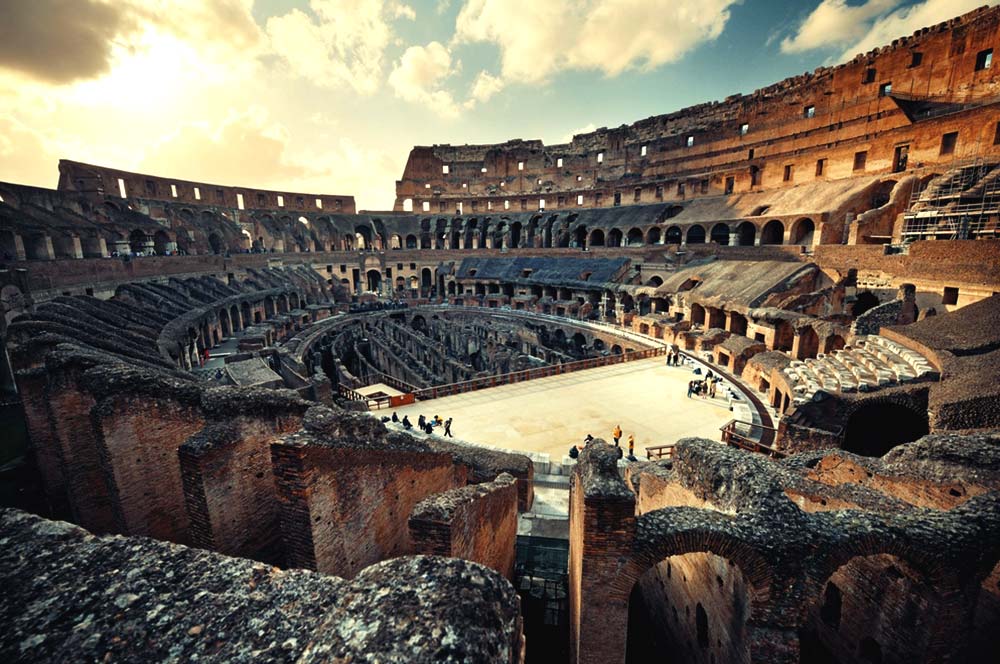
Absolutely, embarking on the underground Colosseum tour is undoubtedly a valuable endeavor. Delving into the subterranean expanse offers an exceptional and enthralling perspective on this historic amphitheater.
This tour grants you the privilege of navigating the intricate labyrinth of tunnels, chambers, and passageways once utilized by gladiators, animals, and stagehands during the Colosseum’s awe-inspiring spectacles.
Venturing through the underground realm unveils the usually off-limits backstage areas. A guided tour of the Colosseum Underground guarantees you access to these exclusive domains.
Experience the corridors where gladiators readied themselves for combat, marvel at the sophisticated system of lifts and trapdoors employed to elevate performers and animals onto the grand stage.
Moreover, the underground Colosseum tour often includes the opportunity to ascend to the third level of the Colosseum. From there, panoramic vistas of the surroundings await, affording a chance to admire the intricate architecture of this age-old marvel.
To optimize your encounter, it’s advisable to secure Colosseum underground tickets in advance, ensuring your assured entry and enabling you to relish the exploration of the Colosseum Rome underground tour to the fullest.
The duration of the Colosseum Underground tour can differ based on the chosen tour package and tour operator. Generally, the underground tour encompasses the exploration of the ancient Rome and Colosseum tour underground chambers and Arena, typically spanning around 3 hours.
Within this timeframe, you’ll have the opportunity to navigate the underground chambers, corridors, and tunnels of the Colosseum, in addition to ascending to the third level for panoramic vistas of Rome.
It’s essential to note that these timeframes are approximate and may slightly vary based on factors such as group size and the pacing of the tour.
For a precise estimate of the tour’s duration and the most current information, it’s recommended to consult “Explore Italy Today”. They can furnish you with comprehensive details concerning the Colosseum Underground tour’s duration.
What is the cost to access the Colosseum’s underground area?
The pricing for the Colosseum underground tour, which encompasses the Colosseum underground and third level tour, can vary contingent on the chosen tour operator and specific package.
For the most precise and current pricing details, it is advisable to consult the official Colosseum website or authorized ticket providers, like “Explore Italy Today”. These sources offer the most accurate and up-to-date information regarding pricing.
As of 2023, Colosseum underground tour prices commenced from €83.00 for skip-the-line tickets. The pricing may be influenced by factors like age, residency, and eligibility for discounts (such as for students or seniors). It’s essential to be aware that these prices may be subject to change. Therefore, confirming the prevailing rates at the time of your visit is crucial.
Furthermore, it’s noteworthy that certain tour packages might encompass added services, such as guided tours or skip-the-line access, which could impact the overall cost. While these options may enhance the experience, they might come with a higher price tag.
Which day is recommended for a visit to the Colosseum?
The Roman Colosseum underground tour is available year-round, yet specific days may offer a more favorable experience. When planning your visit, it’s crucial to take into account factors like crowd size, weather conditions, and any particular events or holidays that could impact your trip.
For an enhanced experience during the Underground Rome tour, it’s generally advisable to select a day and time when the site is less congested. Weekdays, particularly Tuesdays through Thursdays, usually boast fewer visitors compared to weekends. Opting for early morning or late afternoon visits also often results in reduced crowds.
Keep in mind that peak tourist seasons, like summer and major holidays, can lead to larger gatherings during the Colosseum Rome underground tour. If you have the flexibility to explore during shoulder or off-peak seasons, such as spring or fall, you’re likely to encounter fewer fellow visitors and shorter lines.
To make an informed decision, consult the official Colosseum website or authorized ticket providers. These sources can supply valuable insights into visitor statistics and crowd levels on specific days, aiding you in crafting a well-informed itinerary that aligns with less crowded periods.
Is the Colosseum underground tour suitable for those with claustrophobia?
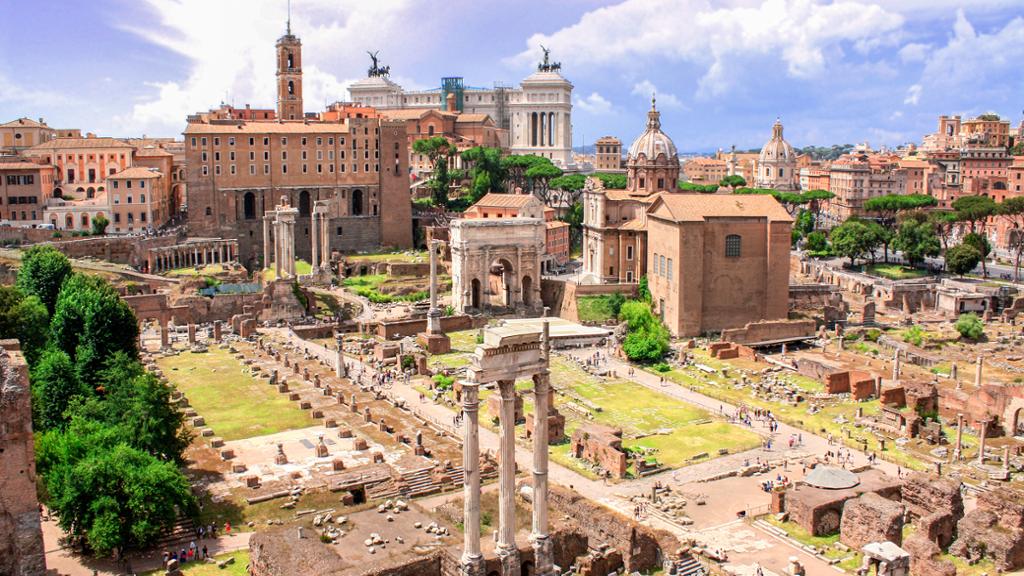
The Colosseum underground tour involves exploring the subterranean sections of the ancient amphitheater, including narrow corridors, tunnels, and chambers.
Individuals with claustrophobia might experience discomfort in confined spaces, though the extent varies based on their condition and personal tolerance.
It’s essential to recognize that the Colosseum’s underground areas have been adapted for visitor accessibility and equipped with safety measures. Typically led by knowledgeable guides, tour groups ensure an organized and safe experience.
For those concerned about claustrophobia, considering a few factors prior to embarking on the underground tour is advisable.
Preparation for Claustrophobia on the Colosseum Underground Tour:
Research:
Explore images, videos, or virtual tours of the Colosseum’s underground spaces to gauge if they might trigger your claustrophobia.
Communication:
Inform your tour guide or staff about your claustrophobia before the tour. They can offer guidance and support, and you can discuss any specific concerns you may have.
Utilize Breaks:
If you start feeling uneasy during the tour, communicate with your guide. Inquire about the possibility of taking breaks or stepping outside briefly to regain your composure.
Explore Alternatives:
If you anticipate that the underground tour might pose challenges for your claustrophobia, consider alternative options. Other tour choices that focus on different Colosseum areas, such as the top tier or general access sections, might be more suitable.
In the end, deciding whether to proceed with the Colosseum underground tour hinges on your personal comfort and the extent of your claustrophobia. Prioritize your well-being throughout the experience, and tailor your choices accordingly.
Is the Colosseum underground tour suitable for children?
Yes, the Colosseum underground tour can indeed be accessible for children. However, several factors should be considered before bringing them along on the tour.
Firstly, take into account your child’s age and level of interest in ancient history. The Colosseum underground tour involves delving into historical and architectural details that might resonate more with older children who can engage with the information shared during the tour.
Secondly, assess your child’s physical readiness. The tour may entail walking on uneven terrain, using stairs, and potentially encountering confined spaces. Ensure that your child is comfortable with such conditions and can actively participate without feeling overwhelmed.
Thirdly, review the specific guidelines and regulations provided by the tour operator or ticket provider. Certain operators could impose age restrictions or offer recommendations on whether the Colosseum underground and third level tour is suitable for young children.
Opting to bring children on the Colosseum underground tour can provide an enriching educational experience. It grants them a unique chance to learn about the captivating history and architecture of ancient Rome.
How much time does it take to evacuate the Colosseum?
The duration required to empty the Colosseum can vary based on several factors. These include the crowd size, available exits, and the efficiency of the evacuation process managed by the staff. It’s worth noting that a complete evacuation of the entire Colosseum might not be necessary for every situation.
As a rough estimate, evacuating the Colosseum could take approximately 10 to 30 minutes or potentially longer, depending on specific circumstances. The staff and security personnel would adhere to established protocols to ensure a safe and organized evacuation procedure.
During regular guided tours or visits, it’s not a common practice to completely empty the Colosseum, unless there’s an emergency or specific instruction from the staff. Visitors are typically guided through designated pathways and exits to maintain a controlled and orderly flow of movement within the Colosseum.
In any emergency or evacuation scenario while at the Colosseum, it’s essential to follow the instructions and guidance provided by the staff to ensure your safety and the safety of others.
Is it feasible to explore the Underground Colosseum independently?
No, visiting the underground sections of the Colosseum without a guide is not an option. Entry to the Ancient Rome and Colosseum tour’s underground chambers and Arena is exclusively available through guided tours. This measure is taken to safeguard the preservation of the historical site and to offer visitors accurate historical context and knowledge about the ancient amphitheater.
The Colosseum’s underground tour holds immense historical and architectural value. Opting for a guided tour enables visitors to grasp its significance comprehensively. Seasoned guides offer insights, historical context, and answers to inquiries, thereby enhancing the overall experience.
To embark on the Colosseum Rome underground tour, covering chambers and the arena, you must secure a guided tour reservation granting access to these exclusive areas. Prior planning and booking are essential due to potential limited availability and high demand for these tours.
Is photography allowed inside the Colosseum?
Yes, you are generally permitted to take photographs within the Colosseum, including during the underground tour. Photography for personal use is allowed, allowing you to capture the captivating architecture, historical elements, and unique perspectives of this ancient amphitheater.
However, there are a few key considerations to bear in mind:
Adhere to guidelines:
Follow any guidelines or instructions provided by your tour guide or staff regarding photography restrictions in specific areas or involving certain objects.
Flash photography:
In certain instances, the use of flash photography might be restricted, particularly in areas containing delicate artifacts or sensitive materials. Be aware of your surroundings and comply with any flash-related restrictions.
Tripods and professional equipment:
Using tripods or professional photography gear may require special permission or be prohibited, especially during busy times or specific tours. Verify equipment regulations with the tour operator or the Colosseum’s official website.
Courtesy toward others:
Be considerate of fellow visitors. Ensure your photography doesn’t hinder or disturb their experience. Avoid obstructing walkways or causing inconvenience to others.
It’s important to recognize that photography policies can vary, so it’s advisable to review the specific guidelines provided by the tour operator or the official Colosseum website prior to your visit.
Colosseum Underground Tour with Fast-Track Access
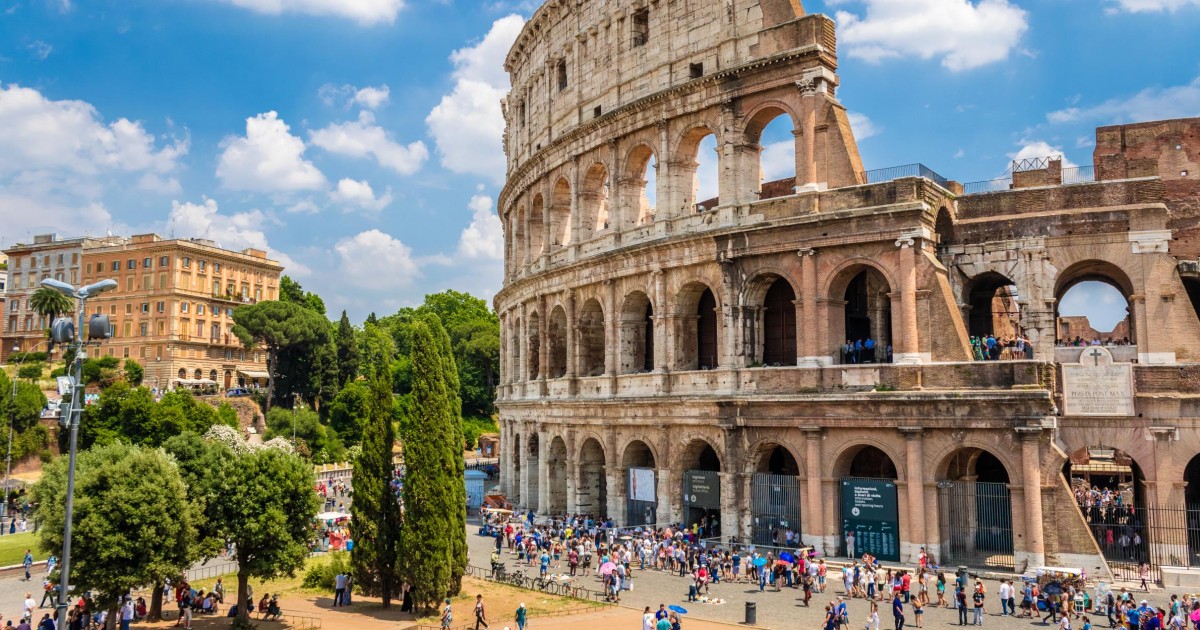
Experience the convenience of guided tours, bypassing the waiting line. Thanks to skip-the-line Colosseum underground tour tickets, you can directly enter the Colosseum with your knowledgeable local guide, saving time.
The Colosseum tour is divided into various segments, each offering different access levels. From the budget-friendly option granting Arena floor access to the more comprehensive one including Underground and top-tier access. Choose the Colosseum tour that aligns with your budget and preferences. Opting for tickets that cover all areas provides a holistic experience, allowing you to fully immerse yourself in the Colosseum’s history.
Here are some Skip-the-line Colosseum Underground Tour Ticket choices offered by “Explore Italy Today”.
Complete Colosseum and Arena Floor Guided Exploration
Step into history’s shoes as you venture into the Colosseum, guided to the Arena floor where gladiators once clashed. Immerse yourself in their world as the expert guide narrates, transporting you to the very spot where these battles unfolded.
Highlights:
► Access via the Gladiator entrance
► Expedited entry to the Colosseum
► Exclusive Arena Floor experience
► Mesmerizing panoramic views from Palatine Hill
► Skip-the-line Private Walking Tour of Rome Colosseum
► Embark on a private journey through the Colosseum with your dedicated guide. An afternoon walking tour lets you relish the authentic aura of this ancient marvel.
Highlights:
► Guided commentary during your city stroll
► Priority access with skip-the-line privileges
► Intimate group setting for a personalized experience
► Ancient Colosseum Underground Expedition with Gladiator’s Arena and First & Second Tier Tour
► Unlock the treasures of this age-old wonder with comprehensive Colosseum underground tickets. Delve deep into its mysteries – from underground chambers to the Gladiator’s entrance and the Arena floor. The journey extends to the Roman Forum and Palatine Hill.
Highlights:
► Escape the queues and congestion
► Uncover the 1st and 2nd tiers of the Colosseum
► Breathtaking vistas from the Arena floor
► In-depth exploration of the Ancient Rome and Colosseum Tour Underground chambers
► Enlightening insights from a seasoned tour guide
► Exclusive Night time Access to the Colosseum
► Embark on an after-hours adventure with an exclusive Colosseum Night tour, granting you VIP entry to areas usually off-limits.
Highlights:
► No waiting in lines
► Absorb the nocturnal allure of the Rome Colosseum
► Enhanced experience with an audio headset
► Small group setting for a personalized touch
► VIP Colosseum Expedition sans daytime crowds
► Option to explore the archaeological exterior post-tour
In Summary
For an unparalleled Colosseum Underground Tour experience, the ideal route is through “Explore Italy Today” guided services. With the Colosseum underground tickets and expert guidance, you’re in for an exceptional Rome underground tour.
We trust this article about the Skip-the-line Colosseum underground tour has proven informative and illuminating. May it have addressed your queries. We eagerly await your upcoming Roman Colosseum underground tour – an adventure sure to be unforgettable!

